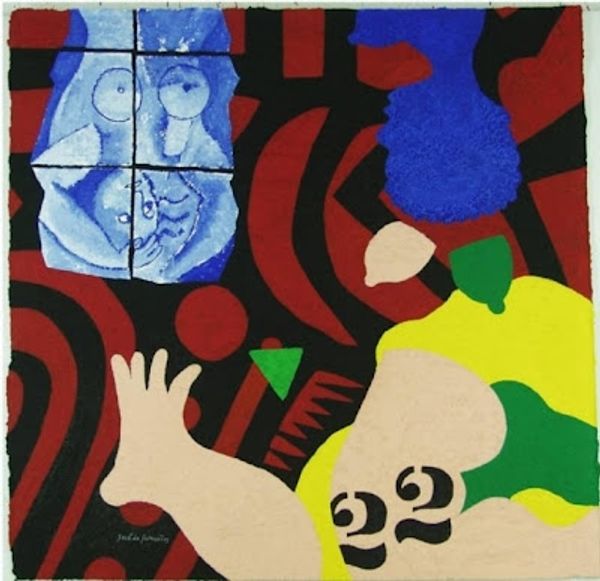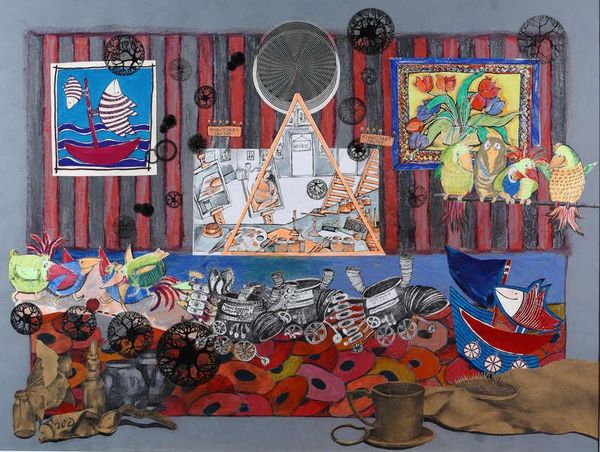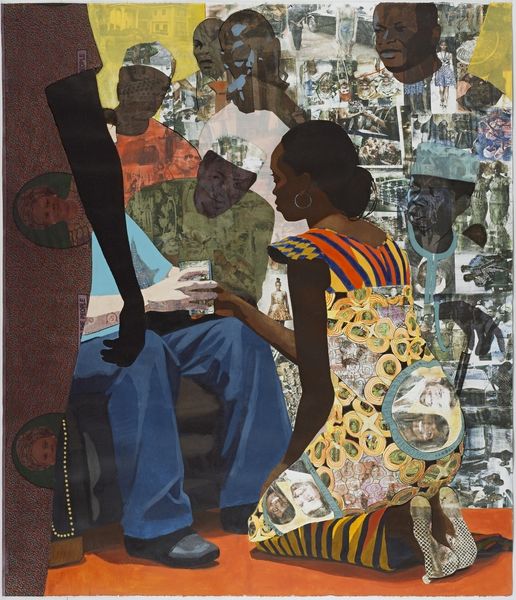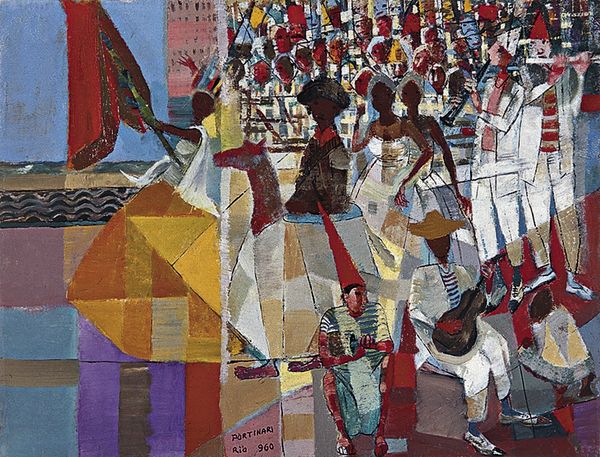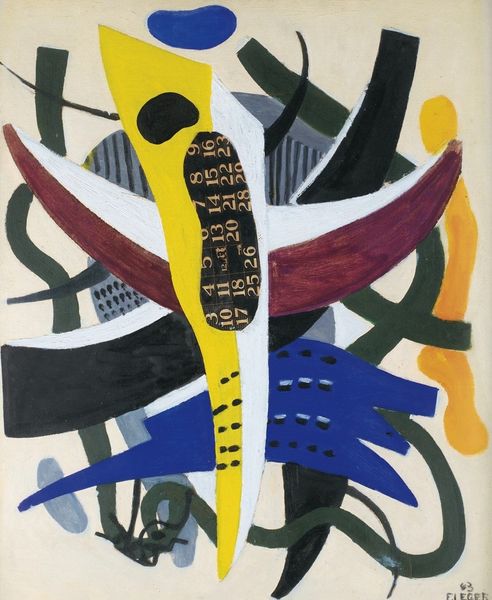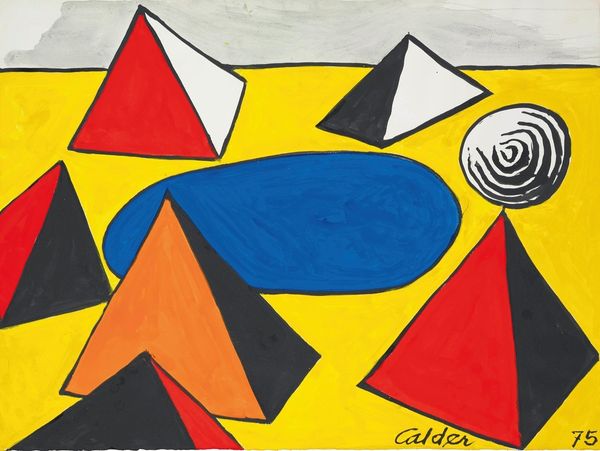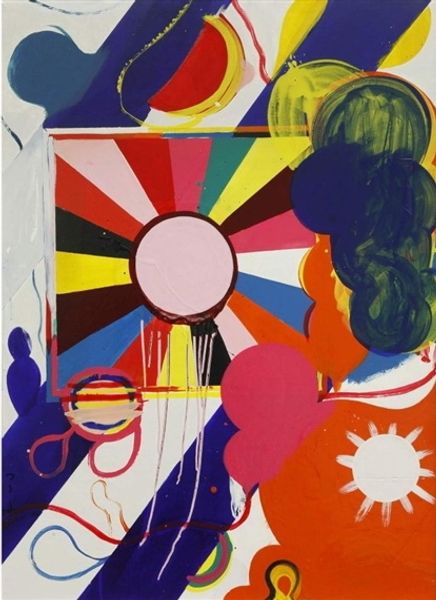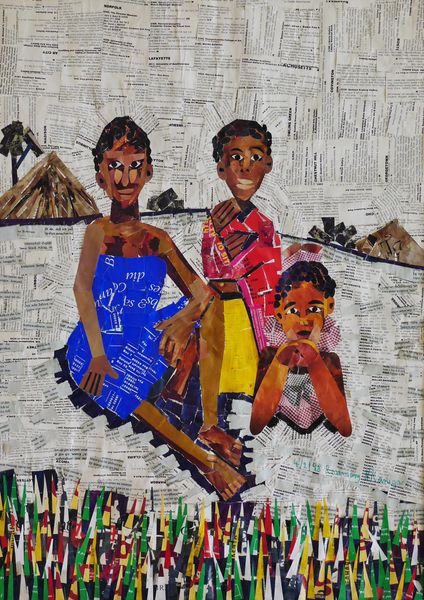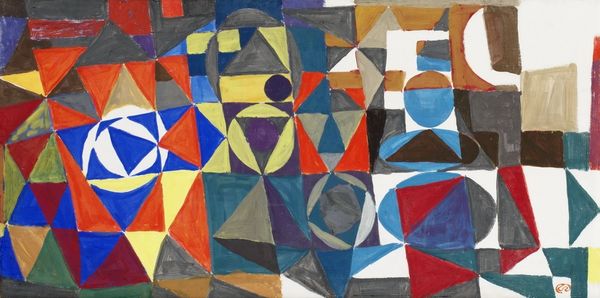
Copyright: Romare Bearden,Fair Use
Curator: Romare Bearden’s vibrant mixed-media collage, "Bessie, Duke, and Louis," created in 1981, is an explosion of color and form. What's your immediate impression of this piece? Editor: A joyful, fragmented portrait. It has a raw, almost improvisational feel, echoing the spontaneity of the jazz it celebrates. The blues and purples really vibrate against the reds and yellows. Curator: Absolutely. Bearden draws on the Harlem Renaissance, incorporating figuration with an almost pop-art sensibility. Consider the cultural and political landscape in which Bearden was working, during the civil rights movements and the Black Arts Movement. He’s actively recovering and celebrating black cultural figures, insisting on their visibility and importance. Editor: The names are so intentionally bold; this is an unapologetic assertion of black genius and creativity, pushing back against the mainstream erasure that has historically plagued Black artists. This goes far beyond just documentation and veers into cultural reclamation. Curator: Bearden was deeply invested in the representation of black life, creating visual narratives that challenge dominant narratives and celebrate black identity, history and cultural expression. I see this collage as part of a larger effort to counter stereotypical or derogatory portrayals of African Americans, offering a nuanced portrayal that embodies resilience, creativity, and dignity. Editor: The fracturing, almost Cubist, effect seems significant. Is it just me or does this invoke the complexities and layers inherent in Black history and identity? The collage technique echoes the piecing together of memories, stories, experiences—creating something whole from disparate parts. It really does show an insistence on resisting simplistic narratives. Curator: That's insightful. Also, remember Bearden’s unique blend of modernist abstraction with themes celebrating the African American experience, thus positioning him as a central figure who helped legitimize and institutionalize Black artists within the mainstream art world. He wasn't just an artist; he was shaping institutions and redefining artistic canons. Editor: Definitely. In a nutshell, looking at this image I feel invited to understand both how Bearden’s art acted as social commentary and an invitation to honor the contributions of these musical icons in a very revolutionary time. Curator: Indeed, a cultural icon offering tributes to cultural icons. Editor: What a thought-provoking intersection.
Comments
No comments
Be the first to comment and join the conversation on the ultimate creative platform.
